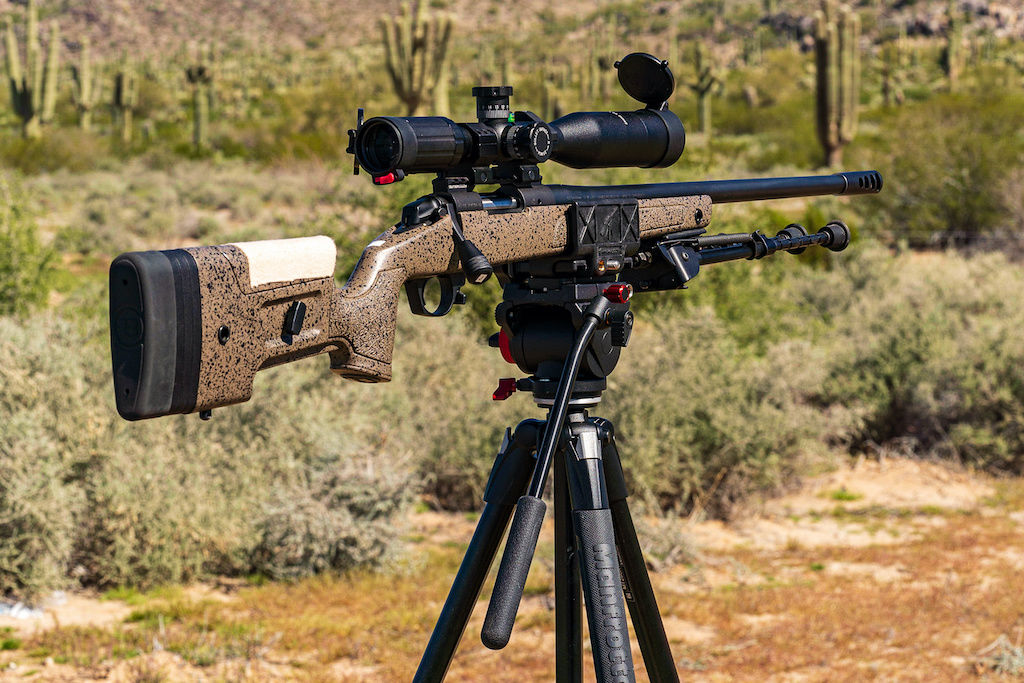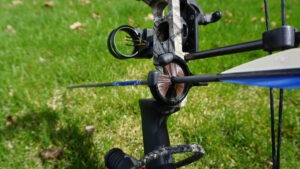Reloading ammunition for the 30-30 rifle can be a rewarding experience for both novice and seasoned shooters. By handloading your own ammunition, you have the flexibility to tailor each round to your specific shooting needs. One crucial aspect of 30-30 reloading is the selection of the right powder. In this comprehensive guide, we will explore the different types of powders available and recommend the top choices for 30-30 reloading.
Understanding 30-30 Reloading
Before diving into the world of powder selection, it’s essential to understand the basics of 30-30 reloading. Reloading involves assembling ammunition by hand, using individual components such as brass cases, primers, bullets, and powder. This practice provides shooters with cost savings and the ability to fine-tune their loads for optimal performance.
Reloading 30-30 cartridges starts with cleaning and inspecting your fired brass. This step is crucial as it ensures that there are no defects or obstructions that could compromise the safety and performance of your ammunition. Once the cases are prepped, they are resized to ensure they fit properly in the chamber of your rifle. This step is necessary because fired brass tends to expand and may not fit snugly in the chamber, leading to potential feeding and extraction issues.
After resizing, the cases are primed. Primers are small metal cups containing a sensitive explosive compound that, when struck by the firing pin, ignites the powder charge. Proper priming is essential for reliable ignition and consistent performance. Once the cases are primed, it’s time to charge them with powder.
The powder you select has a significant impact on the performance of your 30-30 loads. Different powders have varying burn rates, affecting the velocity and pressure generated when the round is fired. It is crucial to choose a powder that is compatible with the 30-30 cartridge and meets your specific shooting requirements. Factors to consider when selecting a powder include burn rate, density, and temperature sensitivity.
Once the cases are charged with powder, it’s time to seat the bullets. Bullet seating depth plays a crucial role in accuracy and consistency. The bullet must be seated to the correct depth, ensuring that it engages the rifling in the barrel properly. This ensures that the bullet is stabilized and achieves optimal accuracy when fired.
Finally, the rounds are crimped. Crimping is the process of applying a slight compression to the case mouth, securing the bullet in place. This step is especially important for tubular magazines, such as those found in lever-action rifles like the iconic Winchester Model 94. Without proper crimping, recoil and magazine tube movement can cause bullets to shift, potentially leading to feeding issues and reduced accuracy.
By meticulously following these steps, reloaders can create custom 30-30 ammunition that is tailored to fit their specific rifle and shooting needs. Reloading not only allows for cost savings but also provides the opportunity to experiment with different components and loads, ultimately enhancing the shooting experience.
Types of Powder for 30-30 Reloading
When it comes to 30-30 reloading, there are two main types of powder that are commonly used: smokeless powder and black powder. Each type has its own unique characteristics and considerations that reloaders should be aware of.
Smokeless Powder
Smokeless powder is the most popular choice for 30-30 reloading, and for good reason. It offers a clean burn, consistent performance, and is readily available in most reloading supply stores. This type of powder is suitable for a wide range of loads and offers a variety of burn rates to accommodate different bullet weights and velocities.
One of the advantages of using smokeless powder is its ability to produce less residue compared to other types of powder. This not only makes cleaning your rifle easier but also helps to prolong its overall lifespan. Additionally, smokeless powder tends to have a more predictable and uniform burn, resulting in more consistent shot placement and accuracy.
However, it’s important to note that while smokeless powder is generally safe to use, it still requires proper handling and storage. Reloaders should always follow the manufacturer’s guidelines and take necessary precautions to ensure their safety.
Black Powder
While not as commonly used as smokeless powder in 30-30 reloading, black powder still holds a special place in the hearts of some enthusiasts. It is a traditional propellant that imparts a unique shooting experience and can add a touch of nostalgia to the reloading process.
When using black powder for 30-30 reloading, there are some specific considerations and precautions that need to be taken. Black powder loads require different loading techniques and may require additional equipment such as a powder measure specifically designed for black powder. It’s also important to note that black powder tends to produce more residue compared to smokeless powder, which means that cleaning your rifle after each use becomes even more crucial.
Furthermore, due to its composition, black powder has a lower energy density compared to smokeless powder. This means that black powder loads may have lower velocities and muzzle energies, which can affect the trajectory and overall performance of your bullets. Reloaders should take this into account when developing their loads and adjust accordingly.
In conclusion, both smokeless powder and black powder have their own advantages and considerations when it comes to 30-30 reloading. Whether you prefer the clean burn and consistency of smokeless powder or the traditional experience of black powder, it’s important to choose the type of powder that best suits your needs and preferences. Always follow proper reloading practices and safety guidelines to ensure a successful and enjoyable reloading experience.
Top Recommended Powders for 30-30 Reloading
After extensive research and testing, we have compiled a list of the top powders for 30-30 reloading. These powders have proven themselves to be reliable and versatile, providing excellent performance across a wide range of bullet weights and velocities.
When it comes to reloading the 30-30 cartridge, choosing the right powder is crucial. The powder you select can greatly impact the performance and accuracy of your loads. That’s why we have carefully evaluated and reviewed various powders to bring you the best options available.
Review of Powder A
Powder A is a highly versatile powder that performs well in a variety of 30-30 loads. It offers excellent consistency and uniformity, resulting in consistent accuracy and velocities. This powder is known for its clean burn, which reduces fouling and makes cleaning your firearm easier.
One of the standout features of Powder A is its moderate burn rate. This characteristic makes it suitable for a wide range of bullet weights, allowing you to experiment and find the perfect load for your specific needs. Whether you prefer lighter or heavier bullets, Powder A can deliver excellent results.
Another advantage of Powder A is its good temperature stability. This means that regardless of the weather conditions, you can rely on consistent performance and reliable ignition. Whether you’re shooting in hot summer temperatures or freezing winter conditions, Powder A will ensure your loads perform consistently.
Review of Powder B
Powder B is another top choice for 30-30 reloading. With its slower burn rate, it excels in heavier bullet loads and magnum velocities. This powder is specifically designed to deliver exceptional muzzle energy and long-range performance.
When using Powder B, you can expect enhanced accuracy and shot-to-shot consistency. Its consistent burn characteristics contribute to tighter groups and improved overall performance. This powder is favored by many experienced reloaders who demand the utmost precision from their loads.
While not as temperature stable as Powder A, Powder B still delivers reliable results in various shooting environments. It’s important to note that temperature stability becomes more critical when shooting in extreme conditions. However, for most shooting scenarios, Powder B will perform admirably and consistently.
When considering which powder to choose for your 30-30 reloading needs, both Powder A and Powder B are excellent options. They offer different characteristics that cater to various shooting preferences and requirements. Whether you prioritize versatility or long-range performance, both powders will deliver exceptional results.
Remember, reloading ammunition requires careful attention to detail and adherence to proper safety protocols. Always consult reliable reloading manuals and follow recommended load data when working with powders and other components.
Factors to Consider When Choosing Your 30-30 Reloading Powder
When it comes to reloading your 30-30 ammunition, selecting the right powder is crucial. Not only does it affect the performance and accuracy of your loads, but it also plays a significant role in ensuring your safety on the range or in the field. Let’s explore some important factors to consider when choosing your 30-30 reloading powder.
Burn Rate: Finding the Perfect Balance
One of the first factors to consider is the burn rate of the powder. The burn rate refers to the time it takes for the powder to ignite and release its energy. It’s important to find the perfect balance between burn rate and bullet weight/velocity. For lighter bullets and lower velocities, faster burn rates are more suitable. On the other hand, if you’re using heavier bullets and aiming for higher velocities, slower burn rates are the way to go. By considering the intended purpose of your loads, you can choose a powder with an appropriate burn rate that will optimize the performance of your 30-30 ammunition.
Granule Size: The Impact on Consistency
Another crucial factor to take into account is the granule size of the powder. The granule size affects the metering and density of the powder, which in turn can impact the consistency of your loads. Smaller granules tend to measure more consistently and fill the case uniformly, resulting in more accurate loads. However, it’s important to note that different powders with varying granule sizes may perform differently. To ensure optimal performance, it’s essential to follow load data specific to your chosen powder. This will help you achieve the desired accuracy and consistency with your 30-30 reloads.
Sensitivity to Temperature: Ensuring Consistent Performance
When selecting a powder for your 30-30 reloads, it’s crucial to consider its sensitivity to temperature variations. Some powders are more sensitive to changes in temperature, which can lead to fluctuations in velocity and pressure. If you anticipate shooting in extreme temperature conditions, it’s highly recommended to choose a powder with good temperature stability. This will ensure consistent performance regardless of the weather conditions, giving you peace of mind when you’re out in the field.
By carefully considering these factors – burn rate, granule size, and sensitivity to temperature – you can make an informed decision when choosing your 30-30 reloading powder. Remember, the right powder can make all the difference in achieving optimal performance, accuracy, and safety with your 30-30 ammunition. So take your time, do your research, and select the powder that best suits your needs and preferences. Happy reloading!
Safety Precautions for 30-30 Reloading
Reloading ammunition requires strict adherence to safety practices. When dealing with reloading powder, taking the necessary precautions is of utmost importance.
Proper Storage of Reloading Powder
Store your reloading powder in a cool, dry place away from direct heat and open flames. Use designated storage containers specifically designed for powders and follow all local regulations regarding storage and transportation.
Safe Handling and Use
Always handle reloading powder with care, following the manufacturer’s instructions. Never smoke or have open flames near the reloading area. Use appropriate measuring tools and avoid exceeding recommended powder charges. Regularly inspect your powder for signs of deterioration or contamination.
Reloading your own 30-30 ammunition can provide a rewarding shooting experience. By selecting the right powder and following safe reloading practices, you can achieve reliable performance and accuracy. Consider the characteristics of different powders, understand their suitability for your desired loads, and always prioritize safety. Start reloading with confidence and enjoy the benefits of custom-tailored ammunition!


